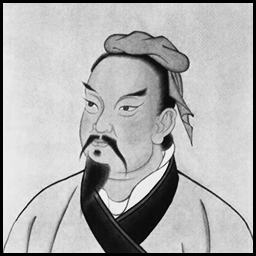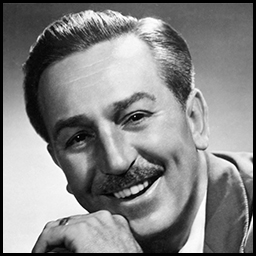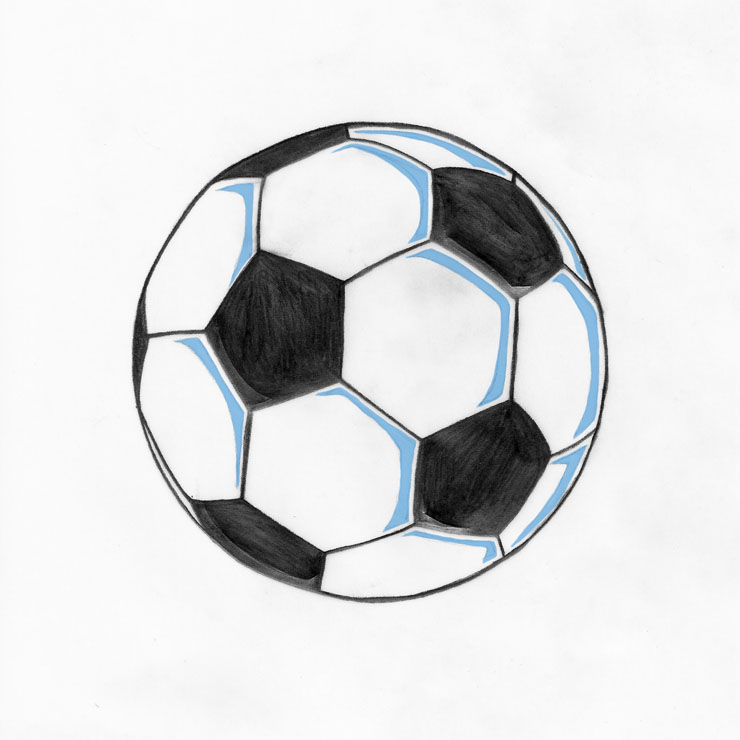
35 — Guillaume Emmanuel De Homem-Christo & Thomas Bangalter
a.k.a: Daft Punk
Occupation: DJs
Born: 1974 & 1975
Died: Not Yet
Brief Description:
Guillaume Emmanuel de Homem-Christo and Thomas Bangalter are French musicians, record producers, songwriters, composers and DJs. They’re better known as the French house music duo Daft Punk.
The two artists famously wear masks in their media appearances which allows them to retain their anonymity and protect their personal lives so not much is known about them. But you probably don’t even care to know, which brings us to why they’re on the list.
Why they’re on the list:
Guy Manuel and Thomas have been very private since their beginning and have had very limited public appearances, choosing to wear masks to conceal their identity and to focus on their music instead. The mystery surrounding Daft Punk’s identity and their elaborate disguises have also added to their popularity.
The result of this is that Daft Punk has become an iconic duo with many successful songs and albums while allowing them at the same time to lead their private lives peacefully without the drawbacks of fame.
I think there is beauty in anonymity, especially when your reputation precedes you. But this balancing act is quite difficult to achieve and for this reason alone, they deserve a spot on my list.
Quote Daft Punk
Quote
“Our only plan is to improvise.”
— Daft Punk
Image
36 — Sun Tzu
a.k.a: Sun Wu
Occupation: Strategist
Born: 544 BCE
Died: 496 BCE
Brief Description:
The historical existence of Sun Tzu has been disputed by scholars and historians. However, my blog isn’t concerned with the historicity of the characters as many of them are fictional anyway and the existence of The Art Of War and its profound influence clearly proves that someone existed to produce said work, and tradition holds that the work was written by one Sun Tzu.
Sun Tzu is said to have been born in the Qi state. He supposedly lived, fought and composed his work during the Spring and Autumn Period which preceded the Warring States Period (481-221 BCE) during which the Zhou Dynasty (1046-256 BCE) was declining and the states once bound to it fought each other for supremacy and control of China.
In the early part of the Spring and Autumn Period, Chinese warfare followed traditional protocol in chivalric behavior before, during and after an engagement. As the era wore on, however, this adherence to tradition became increasingly frustrating in that no state could gain an advantage over another because each was following exactly the same protocol and employing the same tactics. So Sun Tzu sought to break this stalemate by outlining a clear strategy of winning decisively by whatever means were necessary. It is said that Sun Tzu proved on the battlefield that his theories were effective, that he had a successful military career and that he wrote The Art Of War based on his tested expertise.
Why he’s on the list:
If you haven’t read The Art Of War, I highly recommend you do.
It’s short but contains a lot of insights that still apply in today’s world since it focuses much more on alternatives to battle and even to war rather than on war itself.
In the meantime, I will leave you with some of my favorite quotes from the book.
“Victorious warriors win first and then go to war, while defeated warriors go to war first and then seek to win.”
“To win one hundred victories in one hundred battles is not the acme of skill. To subdue the enemy without fighting is the acme of skill.”
“What the ancients called a clever fighter is one who not only wins, but excels in winning with ease.”
“Thus we may know that there are five essentials for victory:
1 He will win who knows when to fight and when not to fight.
2 He will win who knows how to handle both superior and inferior forces.
3 He will win whose army is animated by the same spirit throughout all its ranks.
4 He will win who, prepared himself, waits to take the enemy unprepared.
5 He will win who has military capacity and is not interfered with by the sovereign.”
“There are five dangerous faults which may affect a general:
1 Recklessness, which leads to destruction;
2 Cowardice, which leads to capture;
3 A hasty temper, which can be provoked by insults;
4 A delicacy of honor which is sensitive to shame;
5 Over-solicitude for his men, which exposes him to worry and trouble.”
“The opportunity of defeating the enemy is provided by the enemy himself.”
“The whole secret lies in confusing the enemy, so that he cannot fathom our real intent.”
“Thus the expert in battle moves the enemy, and is not moved by him.”
“If your enemy is secure at all points, be prepared for him. If he is in superior strength, evade him. If your opponent is temperamental, seek to irritate him. Pretend to be weak, that he may grow arrogant. If he is taking his ease, give him no rest. If his forces are united, separate them. If sovereign and subject are in accord, put division between them. Attack him where he is unprepared, appear where you are not expected.”
“Hence that general is skillful in attack whose opponent does not know what to defend; and he is skillful in defense whose opponent does not know what to attack.”
“Be extremely subtle even to the point of formlessness. Be extremely mysterious even to the point of soundlessness. Thereby you can be the director of the opponent’s fate.”
“Move swift as the Wind and closely-formed as the Wood. Attack like the Fire and be still as the Mountain.”
“Let your plans be dark and impenetrable as night, and when you move, fall like a thunderbolt.”
“Quickness is the essence of the war.”
“In the midst of chaos, there is also opportunity.”
“If the mind is willing, the flesh could go on and on without many things.”
“Even the finest sword plunged into salt water will eventually rust.”
“Ponder and deliberate before you make a move.”
“Plan for what is difficult while it is easy, do what is great while it is small.”
“One mark of a great soldier is that he fights on his own terms or fights not at all.”
“You have to believe in yourself.”
“Energy may be likened to the bending of a crossbow; decision, to the releasing of a trigger.”
“The worst calamities that befall an army arise from hesitation.”
“If soldiers are punished before they have grown attached to you, they will not prove submissive; and, unless submissive, they will be practically useless.
If, when the soldiers have become attached to you, punishments are not enforced, they will still be useless.
Therefore soldiers must be treated in the first instance with humanity, but kept under control by means of iron discipline. This is a certain road to victory.”
“Rewards for good service should not be deferred a single day.”
“When one treats people with benevolence, justice, and righteousness, and reposes confidence in them, the army will be united in mind and all will be happy to serve their leaders.”
“Treat your men as you would your own beloved sons. And they will follow you into the deepest valley.”
Quote Sun Tzu
Quote
“If you know the enemy and know yourself, you need not fear the result of a hundred battles.”
— SUN Tzu
Image
37 — Walter Elias Disney
a.k.a: Walt
Occupation: Animator
Born: 1901
Died: 1966
Brief Description:
Walt Disney was the fourth son of Elias Disney, a carpenter, farmer and building contractor and his wife, Flora Call, a school teacher. When Walt was still very young, his family moved to a farm near a typical small Midwestern town in Missouri, which is said to be the inspiration behind Disneyland’s Main Street. There, Walt began his schooling and first showed aptitude for drawing and painting.
His father soon abandoned farming and moved with his family to Kansas City where he bought a morning newspaper route and compelled his sons to assist him in delivering papers which instilled discipline in them in the process. Walt also began to study art and cartooning while in Kansas City and continued doing so in high school after he had moved back to Chicago.
His career plans were interrupted by World War I, in which he participated as an ambulance driver for the American Red Cross in France and Germany.
Returning to Kansas City in 1919, he found occasional employment as a draftsman and inker in commercial art studios, where he met Ub Iwerks, a young artist with whom he eventually started a small studio in 1922 but was force to file for bankruptcy one year later.
After moving to California, Walt reopened a studio there with Ub and his brother, Roy. They invented a character called Oswald, the Lucky Rabbit, but soon after, they came up with a new character, a cheerful, energetic and mischievous mouse called Mickey. The first Mickey Mouse cartoon, Steamboat Willie, was equipped with voices and music and became an instant sensation when it appeared in 1928.
Disney continued with his animation shorts, creating a new series called Silly Symphonies as well as many new anthropomorphized animal characters like Donald Duck and Goofy and adding color to his animations. But Walt Disney always wanted to push the limits and had long thought of producing a feature-length animated film. So in 1934, he began to work on Snow White and the Seven Dwarfs. The success of Snow White paved the way for many more feature-length animations and live-action/animation hybrids which established the Disney studio as a big-business enterprise.
In the early 1950s, Disney had initiated plans for a huge amusement park to be built near Los Angeles. Disneyland opened in 1955. The success of the first Disneyland pushed Walt to create a second Disney park, Walt Disney World, near Orlando but Walt Disney died in 1966 while the park was still under construction.
Why he’s on the list:
Walt Disney’s imagination and vision paired with his technical knowledge makes him a true genius and a visionary capable of mesmerizing his audience. He was also undeniably a huge influence on many other studios and the animation field as a whole, even influencing the Japanese anime style. And in the true spirit of pioneers, he kept pushing the limits of the possible whether it was through his animations or through his theme park.
I grew up watching Disney animations. I’ve watched all Disney animated features (there are more than you think) and a big portion of their animated short films. And to this day, they’re the ones I like the most. And while I haven’t created any outstanding work (yet), I am often told to this day that I have a great imagination and a childlike spirit and I think it’s largely due to Disney’s influence on my childhood.
To conclude, I will end this post with a fun trivia fact:
Walt Disney holds the record for winning the most Academy Awards, 22, as well as the most Academy Awards nominations, 59.
And now, he also holds a spot on my list. =)
Quote Disney
Quote
“It’s kind of fun to do the impossible.”
— Walt Disney
Image
38 — José Luis Félix Chilavert González
a.k.a: El Buldog
Occupation: Goalkeeper
Born: 1965
Died: Not Yet
Brief Description:
Jose Luis Chilavert grew up in Luque, Gran Asuncion in a poor family. He made his footballing debut with Sportivo Luqueño. In 1989, he played for the Paraguayan national team for the first time. He later moved to Spain, where he played for Real Zaragoza. After his time at Real Zaragoza, he moved to Argentina, where he played with Vélez Sársfield, helping them win the Primera División four times, as well as the Copa Libertadores and the Intercontinental Cup, both in 1994. He later also played for RC Strasbourg and Peñarol.
Chilavert was voted World Goalkeeper of the Year by the IFFHS in 1995, 1997, and 1998.
Chilavert was famous for taking penalty kicks and free kicks. He participated in the 1998 World Cup, where he became the first goalkeeper ever to take a direct free kick in the World Cup finals. In that World Cup, he helped take Paraguay to the round of sixteen, where the team lost to France (who won that World Cup) on a golden goal scored by Laurent Blanc. And in 1999, he became the first goalkeeper known to score a hat-trick in the history of professional football, while playing for Vélez against Ferro Carril Oeste, scoring all three goals through penalties. In total, Chilavert achieved a goalkeeper record of eight international goals and is also the second-highest goalscoring goalkeeper of all time.
He retired from international football in 2003.
Why he’s on the list:
As the 2022 World Cup is approaching, I find it appropriate timing to share this post.
Since my childhood, I have had special affinity for goalkeepers, so I wanted to choose one as a representative for this position on my list.
Being a goalkeeper is a position that requires agility and fast reflexes, two qualities I have always admired. Great goalkeepers also tend to have great instincts, often having to take decisive actions in a split of a second. And the best goalkeepers are also great leaders (and as such, often their team captains) and the team often looks up to them for confidence and comfort.
And so, when I was 12 years old, watching the 1998 World Cup, I was impressed by this unconventional goalkeeper playing for an underdog team and performing very well against all odds. Since then, he became my favorite.
Finally, I would like to end this post with a special shout-out to Gianluigi Buffon and Iker Casillas who were close alternatives to being the goalkeeper representative on my list.
Quote Chilavert
Quote
“Pressure? This is just a football match. When you do not know how to feed your children, that is pressure.”
— Jose Luis Chilavert






